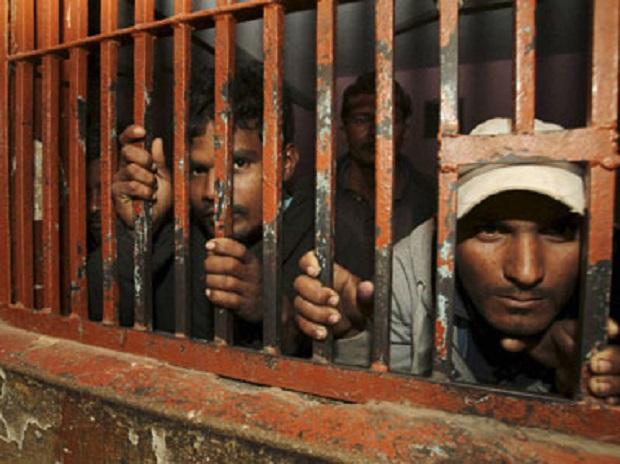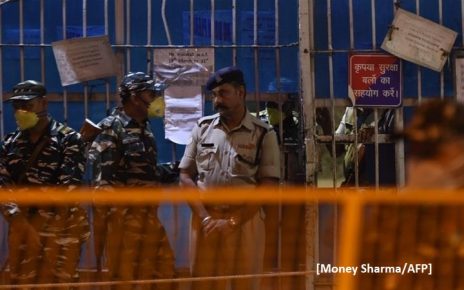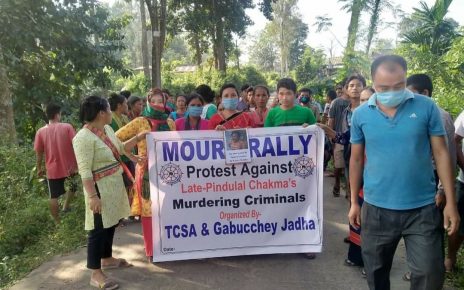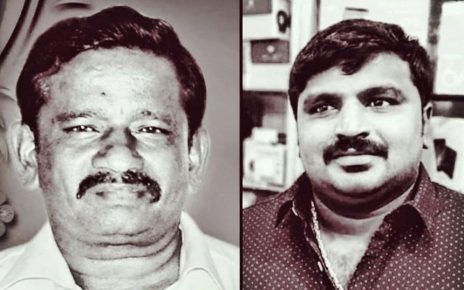Business Standard
06 August 2020
Torture in police custody is “routine” in India, experts say, and is mostly used to coerce suspects to give up information and build evidence during an investigation
At least 17,146 people were reported to have died in judicial and police custody–nearly five a day, on average–in cases registered in the decade to March 2020, according to the latest data from the National Human Rights Commission (NHRC). This year alone, in the seven months to July 2020, the NHRC reported 914 deaths in custody, 53 of these in police custody.
On June 23, a father-son duo in Tamil Nadu’s Thoothukudi district died allegedly due to injuries caused by police brutality. The two had had an altercation when the police ordered them to shut their mobile accessories shop during a lockdown curfew. The case made headlines and revived demands for police accountability–the Madras High Court ordered a probe, and the case was eventually handed over to the Central Bureau of Investigation (CBI). Earlier, in February, a Dalit man in Barmer, Rajasthan, had allegedly been killed in police custody after having been detained on theft charges.
Torture in police custody is “routine” in India, experts say, and is mostly used to coerce suspects to give up information and build evidence during an investigation. It is also used by jail officials to settle scores with suspects they consider “troublesome”. The absence of laws against custodial torture, lack of reforms in police governance and accountability, underdeveloped interrogation and forensic techniques, and limited options for the prosecution of erring officials are to blame, experts say.
Torture is ‘routine’
Of the 15,759 cases recorded over a decade in NHRC data, 92% of deaths were in judicial custody–which can extend up to 60 or 90 days–and 1,387 in police custody, which can last only 24 hours unless extended by a magistrate for up to 15 days. Not all deaths in judicial custody are the result of torture or beatings and can be due to ailments or medical negligence, but those in police custody tend to be the result of violence, experts told IndiaSpend.
“There are more deaths in prisons (judicial custody) because there are more people in custody. All of the deaths in prisons are not necessarily because of torture. It could be due to medical negligence or old age,” Suhas Chakma, coordinator, NCAT told IndiaSpend. “Therefore, the number of deaths in judicial custody are higher.”
In 2019, the National Campaign Against Torture (NCAT), an anti-torture platform for NGOs, documented the death of 125 persons in 124 cases in police custody in India, according to a June 2020 NCAT report on torture.
“The practice of torturing the suspects in police custody to punish them or [to] gather information or extract confessions continued to be rampant,” noted the 2019 NCAT report on the 15 common trends in custodial torture and impunity in India.
During the 10-year period to 2019-20, the NHRC has reported, on average, 139 police custody cases and 1,576 judicial custody cases annually. In the eight years to 2019-20, the NHRC has reported more than 1,500 judicial custody deaths each year.
Custodial deaths are underreported
The NHRC guidelines say that custodial deaths should be reported within 24 hours of their occurrence, and a “failure to report promptly would give rise to presumption that there was an attempt to suppress the incident”. However, the law does not provide for punishment for failure to report. “No action is taken as police can give all sorts of excuses for not producing a person,” said Chakma.
The filing of a first information report is mandatory in the case of custodial deaths, but compliance is rare. The NHRC has issued guidelines that a magisterial inquiry be completed in two months and must determine the circumstances of death; manner and sequence of incidents; the cause of death, and so on.
Not every death in police custody is reported by the police, said Chakma. “There are deaths that happen outside the lockup which are never reported to the NHRC.”
The latest available data for 2018 from the National Crime Records Bureau (NCRB), the official crime data collation agency, showed 46 police custody deaths and 29 cases registrations. The most cases were reported from Gujarat (13) followed by Tamil Nadu (12).
Torture in police custody is routine, said Ravi Nair, executive director, South Asia Human Rights Documentation Centre (SAHRDC), a network of individuals working on human rights. “Prisoners dying due beatings are not reported. Such beatings happen commonly across the country,” he said.
The NCRB data underestimate the enormity of the problem, Nair said, because it does not collate enough data. Figures from NGOs are not reliable either because they rely largely on English media reports, he added.
Poor health facilities in prisons
The conditions in jails pose a health risk for prisoners, noted the India Justice Report (IJR) 2019. There should be at least one medical officer for every 300 prisoners and in central prisons one doctor should always be available, as per the Model Prison Manual 2016. Twelve of the 20 states and union territories (UTs) studied in the report had a shortfall of 50% or more medical officers.
Across India, the prison occupancy rate was 117%, according to 2018 prisons data. Uttar Pradesh had the highest rate, at 176.5%.
Kafeel Khan, a UP doctor who is in jail for protesting against the government on the Citizenship Amendment Act, wrote, in a letter later published on the website Article-14: “In a jail made for 534 inmates, there are 1,600 people kept with one barrack holding at least 100-125 of us. There are just 4-6 toilets. With just one attached toilet, 125-150 inmates, the smell of their sweat and urine mixed with unbearable heat due to electricity cuts makes life hell over here: A living hell indeed.”
Recently, Marxist-poet Varavara Rao, 80, was admitted in hospital after contracting COVID-19 in jail, and has been denied bail despite his advanced age.
Nineteen states and UTs spent between Rs 20,000 and Rs 35,000 per inmate annually, as IndiaSpend reported in November 2019, which was less than Rs 100 per day on each prisoner. This included expenditure on food, clothing, bedding, water, sanitation, hygiene, medical care, and so on but not money spent on salaries and overheads.
“Yes, [custody] deaths provide an indication of the health facilities within prisons. The number and quality of health staff are insufficient,” said Vijay Raghavan, professor, Centre for Criminology and Justice at the Tata Institute of Social Sciences and project director of Prayas, a field action project working on criminal justice.
Governance, cultural issues at play
Of the 125 deaths documented by NCAT across the country in 2019, Uttar Pradesh reported the highest number (14) of deaths in police custody, followed by Tamil Nadu and Punjab, at 11 deaths each.
“The issue of custodial deaths is a combination of governance [issues] and a legacy of police administration,” said N. Ramachandran, former director general of police, Assam and Meghalaya, and founder and president of Indian Police Foundation, a think-tank. He cited the example of Kerala where the incidence of custodial violence is relatively low, because of greater public awareness about rights. In Tamil Nadu, in the case of Thoothukudi for example, local cultural and caste issues were at play, he added (see next section for how people from marginalised groups are more likely to land in prison).
Most police officers speak of reforms but without accountability, emphasising the need to insulate themselves from political control, said Chakma. “But if you do that without accountability, you become law unto yourself,” he said.
Marginalised, poor more vulnerable
Two in three prisoners (69%) and undertrials (65%) in India are from the Scheduled Castes, Scheduled Tribes or Other Backwards Classes, according to prisons’ data.
“Throughout India, people from marginalised castes and uninfluential sections of society are usually at the receiving end,” said Ramachandran. “In most places a poor person is more likely to get tortured compared to someone who has financial or political influence.”
Of the 125 deaths in police custody documented by the NCAT in 2019, 60% belonged to poor and marginalised communities, said the report. These included 13 victims from Dalit and tribal communities and 15 Muslims.
Often, the victims have little or no access to legal support or ability to follow up on cases. “Most of them are from poor socio-economic backgrounds with no influence,” said Nair.
In 14 years to 2018, there have been no convictions of policepersons accused of custodial torture, noted the NCAT report. During this period, 500 cases of death or disappearance of persons remanded in police custody were reported, and 54 policepersons were chargesheeted.
Coercing suspects
Often, witnesses to custodial torture are the police themselves; some of them may not be willing to give evidence against colleagues, or suspects might get “protection from senior officers”, said Ramachandran. “This poses problems in getting convictions,” he said.
“Much of the torture happens during investigation when [the police] are trying to solve a case,” said Ramachandran. Often the issue is that police officials are under pressure to solve a case fast and physical violence is used to extract information from a suspect. It is also likely that the suspect is tortured into admitting to a crime they did not commit, said Ramachandran.
Why do the police resort to beatings? The reason is the absence of any specialised police training in how to get information out of a suspect or how to provide evidence of wrongdoing using forensics. “Apart from the CBI, no police force has a good forensic lab,” said Nair.
Although technology is increasingly coming into use, scientific methods of investigation are still new in India. Efficient forensic technology is the only way to reduce custodial violence, Ramachandran said.
Legal hurdles and lack of anti-torture laws
Conviction in case of custodial toture is difficult because government permission is required to prosecute public officials. Under Section 197 of the CrPC, no government official or member of the armed forces alleged to have committed a criminal offence while acting or purporting to act in the discharge of their official duty can be prosecuted except with the prior sanction of the central or state government.
“Even if it reaches the stage of prosecution when chargesheets are filed, the permission for prosecution [of a public servant] may not be given,” said Chakma, coordinator of NCAT.
Further, Section 132 of the CrPC also protects police, armed forces and even civilians who engage in activities to help disperse crowds from prosecution without prior sanction.
Nair of SAHRDC agreed that Section 197 read with Section 132 of CrPC is an obstacle. The National Police Commission, in its eighth report, had recommended that “the protection available to the police officers under these sections should be withdrawn so that the private complainant is free to press his complaint against police official for a judicial pronouncement without there being a provision to obtain prior permission of the competent authority for such prosecution”.
The 273rd report of the Law Commission noted that impunity provisions such as Section 197 must go, said Nair. “That was also not implemented,” he added. The 113th report of the Law Commission recommended a change in the Evidence Act by inserting a new clause [114 (B)] where the onus of proof of not having tortured a person falls on the police official and not the victim.
Although India signed the UN’s Convention against Torture and Other Cruel, Inhuman or Degrading Treatment or Punishment (UNCAT) in October 1997, it is yet to ratify it despite the Law Commission’s recommendation.
The government has “no intention to ratify the UNCAT or enact a national law against torture despite the Law Commission of India submitting the draft Prevention of Torture Bill, 2017 for enactment by the parliament in October 2017”, the NCAT report noted. The Supreme Court’s refusal to issue directions to the Centre has “further emboldened the government of India not to ratify the UNCAT”.
Between 2009 and 2018, 982 police custody deaths were reported by the NCRB, the NCAT report noted, and for them 395 magisterial enquiries and 261 judicial enquiries were constituted. “Anyone can be appointed as executive magistrate,” said Nair, but the problem is that they are always looking at the executive leadership for directions. “A judicial magistrate, at least theoretically, has more independence.”
The problem, said Chakma, is that the grant of sanction for prosecution is an executive decision without application of judicial mind, and the courts cannot proceed without prior sanction for prosecution by the executive.




